The Ministry of Environment yesterday published a white paper on air quality policies aiming to bring down PM2.5 level to 8 micrograms per cubic meter while achieving the carbon reduction goal of 38 percent, plus or minus 2 percent, by 2035.
The white paper was formulated using a bottom-up approach by collecting 570 suggestions from the public and academics to guide the government to set up the 10-year goal and 42 action plans accordingly, Minister of Environment Peng Chi-ming (彭啟明) told a news conference yesterday.
While stationary pollution sources, such as factories, used to be stressed in air quality issues, mobile sources such as vehicle emissions have become more common and should be considered, he said.
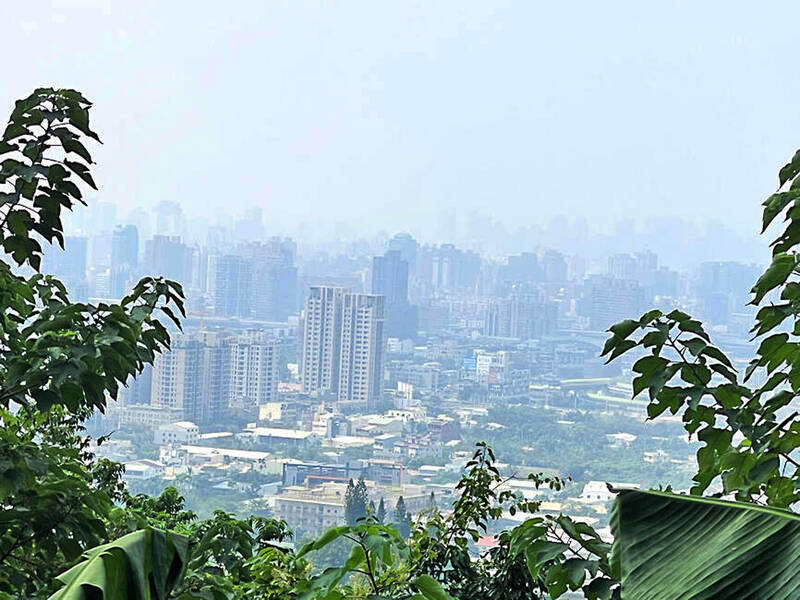
Photo: Liao Yao-tung, Taipei Times
The white paper sought to integrate net-zero goals with air quality improvement efforts and set the goal of reducing PM2.5 levels to 8 micrograms per cubic meter in the next decade, aligning with the carbon reduction goal of 38 percent, plus or minus 2 percent, by 2035, Peng said.
The ministry has planned 62 schemes to meet such a challenging goal, including potential amendments to current air pollution laws, he said, adding that 18 artificial intelligence (AI)-powered tools would be introduced to aid the effort.
Department of Atmospheric Environment Director Huang Wei-ming (黃偉鳴) said PM2.5 levels had decreased by 47 percent from 2013 to last year.
However, a more diversified policy is required, as lowering PM2.5 levels has become more costly in money and personnel due to diminishing marginal returns and aggravated ozone pollution, he said.
Future air quality improvement efforts would be focused on bolstering people’s health, improving indoor air quality, addressing emerging air pollutants, promoting green transportation and sustainable agriculture, and developing talent and AI applications in this field, Huang said.
National Central University (NCU) environmental engineering professor Chang Moo-been (張木彬) stressed the importance of citizen participation in counteracting air pollution, saying that turning off unused lights and saving electricity can help reduce carbon emissions by fossil fuel power generation.
Carbon reduction and air pollution reduction efforts could be mutually exclusive, and would require further research and development to meet both targets, he said.
For example, factory operators would burn nitrogen oxides and volatile organic compounds to prevent them from forming ozone, but such combustion would generate carbon dioxide instead, Chang said.
NCU atmospheric sciences professor Lin Neng-huei (林能暉) said that nearly half of the responsibility to improve air quality would fall on the shoulders of citizens, as pollution from transportation sources made up 27 percent of air pollution and pollution from life sources 20 percent.
Chang Gung University green energy and environmental resources professor Lai Hsin-chih (賴信志) also raised awareness of transportation source pollution, calling on the public to join the effort by reducing car or motorcycle emissions around schools or traditional markets.
National Health Research Institutes researcher Chen Yu-cheng (陳裕政) said that PM1.0 — particles smaller than PM2.5 with a diameter of 1 micrometer or less — should be foregrounded to ensure human health, as such tiny particles could enter the blood and reach the brain.
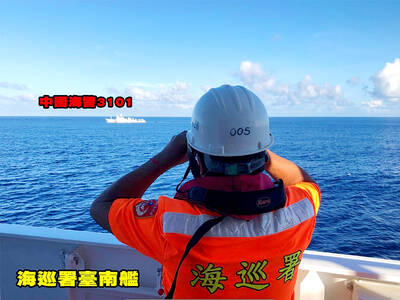
The Coast Guard Administration (CGA) yesterday said it had deployed patrol vessels to expel a China Coast Guard ship and a Chinese fishing boat near Pratas Island (Dongsha Island, 東沙群島) in the South China Sea. The China Coast Guard vessel was 28 nautical miles (52km) northeast of Pratas at 6:15am on Thursday, approaching the island’s restricted waters, which extend 24 nautical miles from its shoreline, the CGA’s Dongsha-Nansha Branch said in a statement. The Tainan, a 2,000-tonne cutter, was deployed by the CGA to shadow the Chinese ship, which left the area at 2:39pm on Friday, the statement said. At 6:31pm on Friday,
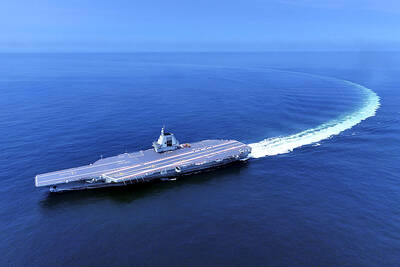
The Chinese People’s Liberation Army Navy’s (PLAN) third aircraft carrier, the Fujian, would pose a steep challenge to Taiwan’s ability to defend itself against a full-scale invasion, a defense expert said yesterday. Institute of National Defense and Security Research analyst Chieh Chung (揭仲) made the comment hours after the PLAN confirmed the carrier recently passed through the Taiwan Strait to conduct “scientific research tests and training missions” in the South China Sea. China has two carriers in operation — the Liaoning and the Shandong — with the Fujian undergoing sea trials. Although the PLAN needs time to train the Fujian’s air wing and
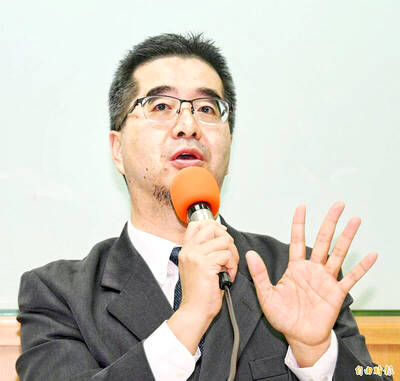
The American Institute in Taiwan (AIT) put Taiwan in danger, Ma Ying-jeou Foundation director Hsiao Hsu-tsen (蕭旭岑) said yesterday, hours after the de facto US embassy said that Beijing had misinterpreted World War II-era documents to isolate Taiwan. The AIT’s comments harmed the Republic of China’s (ROC) national interests and contradicted a part of the “six assurances” stipulating that the US would not change its official position on Taiwan’s sovereignty, Hsiao said. The “six assurances,” which were given by then-US president Ronald Reagan to Taiwan in 1982, say that Washington would not set a date for ending arm sales to Taiwan, consult
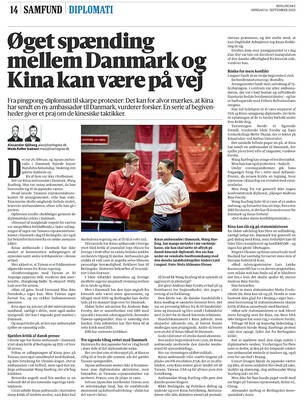
A Taiwanese academic yesterday said that Chinese Ambassador to Denmark Wang Xuefeng (王雪峰) disrespected Denmark and Japan when he earlier this year allegedly asked Japan’s embassy to make Taiwan’s representatives leave an event in Copenhagen. The Danish-language Berlingske on Sunday reported the incident in an article with the headline “The emperor’s birthday ended in drama in Copenhagen: More conflict may be on the way between Denmark and China.” It said that on Feb. 26, the Japanese embassy in Denmark held an event for Japanese Emperor Naruhito’s birthday, with about 200 guests in attendance, including representatives from Taiwan. After addressing the Japanese hosts, Wang